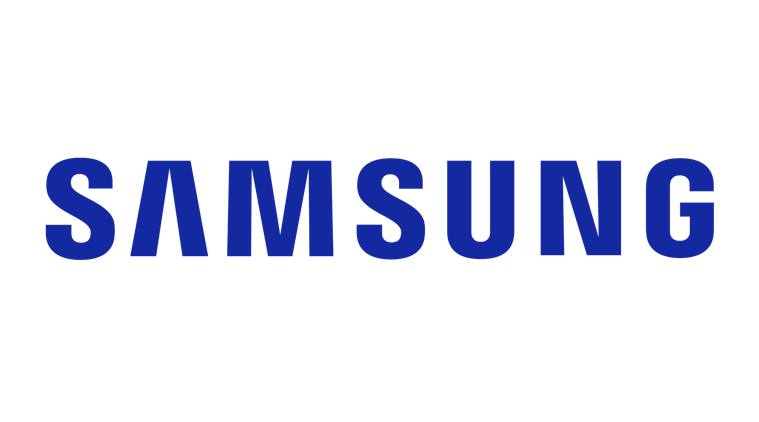Digital Printing Division
Years of research and development at Samsung have resulted in a superior technology that produces printers of
the highest print quality. This unsurpassed quality is evident in Samsung all-in-one ASIC, which includes
the hardware accelerator for half-toning called the Samsung Resolution Technology (SRT) chip. The
introduction of the SRT chip, which allows for finer resolution with smooth gray shading, has placed Samsung
as the industry leader in grayscale imaging.
Thanks to this outstanding technology, users can obtain finer, smoother, higher-resolution printed images,
whether they are from the Internet or from document programs.
Samsung produces Facsimile of best quality and performance. All Facsimiles are capable of handling multiple
applications. Samsung manufactures Low end, Midrange and High end
facsimiles specially designed to suit all the environments and budgets. The Low-end and Midrange printers
and facsimiles offer 12PPM to 16 PPM with most advanced emulations of PCL6, and high speed fax modems.
The High-end network-ready printers offer 16PPM to 40PPM with laser printing. The Multi-function peripherals
(MFPs) are laser printers that include 33.6kbps baud fax modem for sending fax at lightning speed, the base
features such as Duplex printing/copying, color scanning (when used with PC/network) and faxing uses onboard
memory. All the MFPs are IEEE 1284(Parallel) standard but now they utilize the speed of USB with IEEE 1284
as optional. The latest MFP uses the Network interface cards, for transmission and reception of fax and
printer data over the network.
SISO, Bangalore works in conjunction with Samsung, Korea to execute various software development and testing
projects for Samsung/OEM Printers, Multi-Function Devices and Bundled Utilities.
Telecom & Network Division
Telecom & Network Division is working on products that enable Samsung to bring the world closer. The
division is involved in research, standardization, product design, system architecture, and development
leading to commercial deployments. The core areas of work in the TND include wireless networks, enterprise
networks and next generation wireless research.
The products developed in TND encompass solutions for multiplicity of markets including service providers
(wireless/enterprise). TND product portfolios are based on the dynamic economics, rapid introduction of new
services, and rapid scalability. Most of the TND teams work with other Samsung Labs around the world in a
virtual team environment.
The work areas include:
(a) Product Development & Commercialization:
The product portfolios include IP Switch, IP Multimedia Subsystem (IMS) and Media Gateway products, MSC Server,
Soft Switch, enterprise elements such as Office servers, for providing end to end solutions. This product
portfolio is required for rapid, large-scale deployment of wireless networks (including 3GPP & 3GPP2 networks),
for incumbent local exchange carriers (ILECs) and competitive local exchange carriers (CLECs), and
multitenant-dwelling unit (MDU) service providers.
-
- IP Switch is designed to provide a multi services architecture and integrated, end-to-end network
management capabilities to provide IP backbone services in the access side of the network. Samsung IP
Switch enables telecommunication providers to differentiate their service offerings by delivering the
highest quality of service-level agreements (SLAs), quality of service (QoS), and IP Services. TND is
involved in development of the embedded software and applications including the fast forwarding and slow
forwarding operations in the data plane. A centre of excellence for the Network Processors applications
and IP protocols and variants is established.
- - IP Multimedia Subsystem (IMS) represents a 3GPP and 3GPP2 effort to define an all IP based wireless
network as compared to the historically disparate voice, data, signalling, and control network elements.
IMS increases the functionality of packet-switched mobile networks by supporting IP-based applications
and services through the SIP protocol. However, the rapid spread of fixed-network broadband and the
offering of services such as transactions, content distribution, and VOIP over all-IP networks have made
IMS increasingly relevant to fixed operators as well.
Telecom Network Division is involved in the design and development of IMS network elements/functions including
the Application servers, session control, gateways, and traffic management algorithms.
- - Softswitch is the concept of separating the network hardware from network software. Circuit switched
networks rely on dedicated facilities for inter-connection and are designed primarily for voice
communications. The more efficient packet based networks use the Internet Protocol (IP) to efficiently
route voice and data over diverse routes and shared facilities. TND is involved in development of the
functional entities of the Softswitch and currently providing the support for worldwide deployment
including the development of the country specific features.
- - IP Based Enterprise Systems such as office serve products including the call servers, Interactive
voice servers, IP phones, & next generation IP phones are being designed and developed at TND.
(b) Next Generation Research: There is a clear emphasis on product centric research, Intellectual Property
creation and standardization leadership. The main areas of work include:
- - Personal Area Networks: Currently the focus is on Ultra Wide Band (UWB) which is a short range
wireless technology based on ad-hoc network concept which and has potential applications in mobile
phones, consumer electronics and PC industry. Wireless USB, Wireless 1394 and digital home applications
are principal users of this technology.
- - Heterogeneous Networking: Complementary characteristics of 3G (3GPP/3GPP2) and WLAN technologies make
a unique case for integrating them for enhancing subscriber experience. Current work includes research
and standardization activities for various user/deployment scenarios, besides developing workable
prototypes. Heterogeneous wireless networks leading to all IP solution (evolution approach to 4G) is a
key work item. Wireless Broadband and 4G technologies are also investigated.
- - Mobile Applications: Research and standardization activities into various subgroups of OMA (Open
Mobile Alliance), notably Instant Messaging, Multimedia Messaging, Presence & Availability, Push over
Cellular etc.
- - IP Network Research: The framework for IP networks (IPv4/IPv6) is being prepared. The effort has led
to many patent filings and IETF contributions. New work item in this research is PANA (Protocol for
carrying Authentication for Network Access).
The mission of TND is to build world class products along with cutting edge research and standardization
leadership.
System LSI Division
Samsung commands the second largest Semiconductor business in the world with a focus on digital and wireless
technology in rapidly growing market segments like Digital TV/Set Top Box, VCD/DVD/MP3 Players, Smart
Phones, and Wireless Handheld PDAs, apart from the established leadership in DRAMs.
System LSI, Korea specializes in the integration of processor cores, memory, high speed I/O interfaces and
advanced peripherals on a single silicon chip to create standard and custom System-on-Chip (SOC) solutions
for next generation mobile and home solution products. We combine our chip design experience, system
expertise and established logic manufacturing processes with embedded and real time software design and
development capabilities to provide product designers with complete solutions. This ranges from sub-micron
fabrication process to Multiprocessor Software Architecture, Real-time Operating System, Device Drivers,
Audio/Video processing, Protocols for Media processing, Networking and Interconnectivity.
System LSI Division (SLD) at SISO is a design center of System LSI, Korea. SLD is involved in development of
software solutions for various SoCs being developed by the parent division. SLD shares the System LSI
vision: Worldwide Leadership in Mobile and Home System-LSI solution. Towards achievement of this vision, SLD
works very closely with the SoC R&D Centre and Business Units of System LSI on a shared roadmap basis. SLD
organization structure reflects this commitment by one-to-one alignment with the System LSI Organization in
Korea.
- Home Platform Group focuses on creating platforms for Broadcast based Home Entertainment Electronics
devices like High Definition Digital Televisions, Set Top Boxes, and Personal Video Recorders etc. built
around the SoCs developed by the Home Solution Team of SoC R&D Centre.
- Mobile Platform Group works on designing and prototyping feature-rich SmartPhones built around the SoCs
developed by the Mobile Solution Team of System LSI, Korea, running the embedded Operating Systems like
MontaVista Linux, Windows CE, Pocket PC, Symbian and PalmOS. These SmartPhones are powerful Multimedia
PDAs with real time video conferencing capability, featuring still camera and camcorder applications
along with advanced 3D Gaming and wireless connectivity through GSM/GPRS/Edge/CDMA/WCDMA modems.
- Multimedia Lab is dedicated to developing reusable IPs for DSP and Multimedia Processing like Speech,
Audio, Video, Image and 3D Graphics libraries etc. To ensure re-usability across different target
platforms and user applications, it follows a ReUse Architecture for design and coding.
- Media Platform Group works on the creation of storage media based consumer electronic products such as
Portable Audio Players, VCD player, DVD Players and DVD Recorders with advanced features of recording
and playback of digital multimedia content such as JPEG Images, Audio in MP3, WMA, AAC, Dolby Prologic
and DTS formats, and Video in MPEG1/2/4 and WMV formats, irrespective of the storage media type Picture
CD, Photo CD, Audio CD, Game CD, Video CD, DVDs or the solid state memory device (MMC, SD, Memory
Sticks, CF card).
Memory Solutions Division
MSD is a recent addition to SISO's Divisions. Currently the team is being built and setup. The role of MSD in SISO is development and testing of BSP (Board Support Packages), debug solution, simulation tools and host drivers on different platforms and different RTOS. The focus is on providing the complete software solution package to the customer along with the NAND/ NOR Flash memory devices. This software solution deals with embedded file system to use oneNAND and moviNAND flash memory in the most stable and effective way. Verification and Validation is based on MMC protocol for NAND Flash memory devices. The scope of testing will be test case preparation, test scripting, test execution, debugging, performance verification and reliability testing for
both SISO and HQ developed software products.
Advanced Technologies Division
Dr S Raghunandan, General Manager and Head, ATD, SISO, 29 June 2006.
In many ways, ATD is the hub of R&D in Samsung India Software Operations. With a strength of about 150 engineers today, ATD is growing at a steady pace in competence, strength, contributions, domains, value-add and importance.
The work in ATD covers a wide spectrum from Research, Standardization, Architecture to Productization. Also, ATD
covers a healthy spectrum of technologies like Short-range communication protocols and platform, IP Multimedia
Subsystem, Ad-hoc and Mesh networks, Wireless Broadband, Multimedia (Codecs, Graphics, Streaming, QoS,
Applications, MM Search, etc.), Home networking, Mobile platform, DRM, Telecom (3GPP, OMA, ), etc.
ATD is also spearheading the initiative about Standardization efforts in SISO. Several cross-divisional
activities indicate good scope for synergy enhancement. With a history of incubating new technologies and
groups, there is a good view of trends in this division.
The Advanced Technologies Division has healthy co-working relationship with the Wireless Terminal Division for
IMS and MM Search areas, with the System LSI Division for UWB and Mesh Network areas, with Digital Printing
Division for Web Services area, with Telecom and Networking Division for applications on WiBro terminals. This
is apart from the cross-divisional Standardization activities. It is possible that soon we have relationship
with premier Institutions also both in India as well as abroad.


